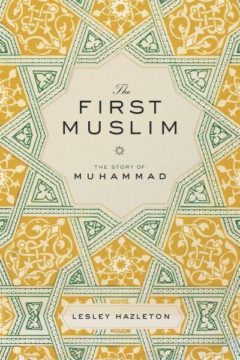The First Muslim

To do justice to a prophet’s story, a biographer must also be like a shadow puppeteer, using both skill and sensitivity to demonstrate how small gestures can project larger-than-life images on the backdrop of history.
In The First Muslim: The Story of Muhammad, journalist Lesley Hazleton paints a strikingly nuanced portrait of how Muhammad the man—fallible and complex—became Muhammad the prophet. “He was no unworldly mystic floating above ordinary humans in a smug aura of holiness, but as the Quranic voice would soon tell him, ‘just a messenger,’ ‘just one of the people.’ ” This sentence encapsulates how Hazleton approaches Muhammad’s journey from an orphan, outsider, and exile to an acclaimed leader. With the insight of a psychologist and the details of a historian, Hazleton portrays a Muhammad both divinely inspired and deeply human.
Hazleton’s Muhammad is defined by contradictions. From self-doubt to faith and from peaceful introspection to violent conquests, Muhammad is portrayed as a man whose greatness resulted from wrestling against himself. This makes him surprisingly relatable and gave him the unique ability to “reach across the aisle.” (Readers may find surprising parallels between seventh-century Arabia and twenty-first-century America).
It is not just the man but also the moment that make The First Muslim so engaging.
Hazelton vividly depicts the cultural and social forces that shaped Muhammad in a Mecca and a Medina full of “rock star” poet provocateurs, fierce clan and tribal loyalties, and gory battles. She also gives significant credit to Muhammad’s first (and significantly older) wife, Khadija, and it is the beauty of this and many other relationships in the book that elevates the biography to a compelling story.









